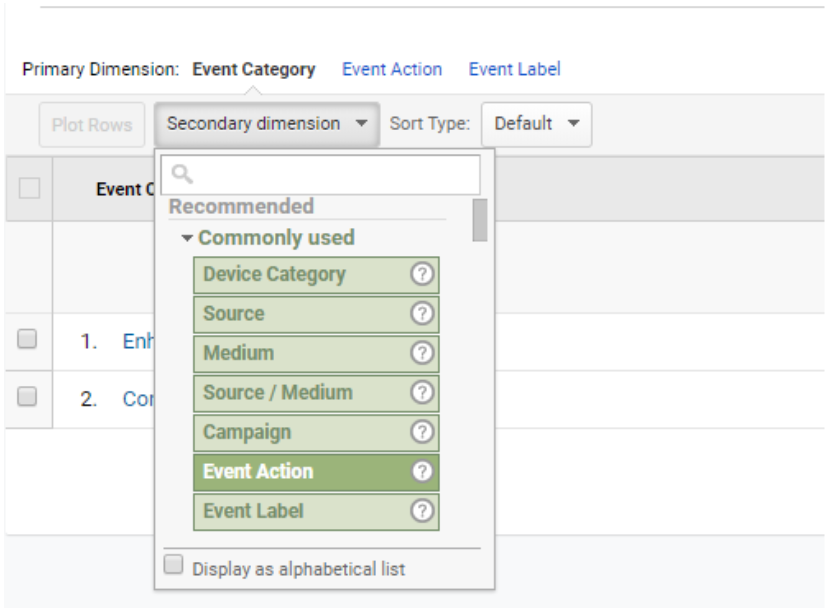A Comprehensive Overview to 'Secondary Dimensions' in Google Analytics: Insights Revealed
A Comprehensive Overview to 'Secondary Dimensions' in Google Analytics: Insights Revealed
Blog Article
Deciphering the Importance of Secondary Measurement in Google Analytics: All Concerning Its Relevance and Effect
In the realm of electronic analytics, the application of additional dimensions within Google Analytics serves as a crucial tool for critical deeper layers of data insights. The value of second measurements hinges on their ability to supply a nuanced view of individual habits and communication with a site or platform. By exploring data past surface-level metrics, businesses can open a wide range of information that improves and forms tactical choices advertising efforts. This expedition right into the realm of second measurements not only offers a comprehensive understanding of customer involvement however additionally loses light on the elaborate characteristics that drive on the internet performance.
Comprehending Secondary Measurements in Google Analytics
The understanding of secondary dimensions in Google Analytics is vital for gaining deeper insights right into individual habits and internet site efficiency. While primary measurements offer basic information factors such as web traffic resources and web page sights, secondary measurements enable a more nuanced evaluation by giving additional context to these main metrics. By integrating secondary measurements, individuals can sector and filter their information to discover patterns and patterns that may not be promptly apparent.

Introducing the Perks of Secondary Measurements
Building upon the foundational understanding of additional dimensions in Google Analytics, exploring the advantages they use reveals important insights for enhancing data analysis and decision-making. By including second dimensions, customers can dig much deeper into their information, acquiring a much more thorough sight of user habits, material performance, and other key metrics. One of the key advantages is the capability to segment information, enabling a much more granular evaluation of various dimensions such as web traffic resources, tools, demographics, and extra. This division allows users to determine patterns, trends, and connections that might not be evident when taking a look at data in accumulation.
Moreover, secondary dimensions give context to main information, supplying added layers of details that can aid in comprehending customer communications and choices. This enhanced understanding can lead calculated decision-making, bring about even more targeted advertising and marketing projects, internet site optimizations, and general enhanced efficiency. Fundamentally, second measurements function as an effective tool for unlocking deeper insights and maximizing the utility of Google Analytics for organizations and internet site owners.
Leveraging Additional Dimensions for Boosted Insights
By utilizing the power of second dimensions in Google Analytics, services can uncover much deeper insights that drive notified decision-making and tactical optimization initiatives. Leveraging second dimensions permits services to dig past surface-level information and obtain a much more comprehensive understanding of user behavior, target market demographics, traffic resources, and web site performance. For instance, by incorporating find this key dimensions like traffic sources with additional dimensions such as geographic area or gadget classification, companies can identify which tools or areas are driving one of the most useful traffic to their web site.
In addition, secondary measurements enable businesses to section and evaluate data more properly, assisting them determine fads, patterns, and opportunities that may have otherwise gone undetected. By making use of secondary measurements, businesses can tailor their marketing strategies, content, and individual experience to far better fulfill the demands and choices of their target market. Basically, leveraging second dimensions in Google Analytics empowers businesses to make data-driven decisions that result in improved performance, enhanced ROI, and lasting growth.

Impact of Additional Measurements on Data Analysis
Enhancing information analysis via the utilization of additional measurements in Google Analytics gives organizations with a deeper understanding of their on the internet performance metrics. By incorporating additional dimensions, such as time of day, geographical place, or gadget group, companies can discover beneficial understandings that may have been overlooked with main dimensions alone. This improved level of granularity enables even more exact division of data, enabling services to determine patterns, fads, and relationships that can drive tactical decision-making.
Making The Most Of Potential: Secondary Dimensions Methods
One essential technique is to incorporate second dimensions with primary measurements to obtain a comprehensive view of user interactions. Combining the key measurement of 'source/medium' with second measurements like 'landing web page' or 'tool group' can reveal which networks are driving traffic to specific web pages or exactly how individual actions differs throughout gadgets.
In addition, making use of additional dimensions to segment data based on customer demographics, habits, or technology can help organizations customize their advertising efforts to details audience sections. This targeted approach can bring about boosted conversion prices, enhanced user experiences, and inevitably, raised ROI. By taking full advantage of the potential of second measurements in Google Analytics, companies can make enlightened decisions, optimize their on-line presence, and drive sustainable growth.
Verdict
In final thought, secondary dimensions in Google Analytics play a critical duty in giving much deeper insights and enhancing data evaluation. Integrating additional measurements right into information analysis techniques can lead to even more educated decision-making and enhanced general performance.
While main dimensions provide basic data points such as website traffic sources and web page sights, additional dimensions permit for a much more nuanced analysis by supplying extra context to these key metrics. By combining main measurements like web traffic resources with second dimensions such as geographical location or gadget category, services can recognize which regions or devices are driving the most important traffic to their site.
By including secondary dimensions, such as time of day, geographic place, or tool category, organizations can this article discover beneficial insights that might have been neglected with primary dimensions alone. One key method is to Visit This Link integrate secondary measurements with main dimensions to gain a comprehensive view of user communications. Pairing the main dimension of 'source/medium' with secondary measurements like 'touchdown web page' or 'tool group' can disclose which channels are driving web traffic to certain pages or exactly how customer behavior differs across tools.
Report this page